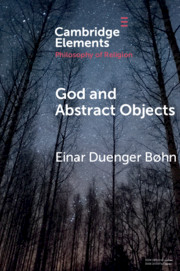4 results
10 - Quantification
-
- Book:
- The Logic of Entailment and its History
- Published online:
- 08 February 2024
- Print publication:
- 15 February 2024, pp 192-214
-
- Chapter
- Export citation

Mathematical Anti-Realism and Modal Nothingism
-
- Published online:
- 02 December 2022
- Print publication:
- 05 January 2023
-
- Element
- Export citation

Divine Ideas
-
- Published online:
- 13 August 2020
- Print publication:
- 03 September 2020
-
- Element
- Export citation

God and Abstract Objects
-
- Published online:
- 19 July 2019
- Print publication:
- 08 August 2019
-
- Element
- Export citation

